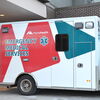Processing Your Payment
Please do not leave this page until complete. This can take a few moments.
- News
-
Editions
-
- Lists
-
Viewpoints
-
Our Events
-
Event Info
- Business Leaders of the Year Reception 2025
- Women's Leadership Forum 2025
- On the Road with Mainebiz in Bethel
- Health Care Forum 2025
- On The Road with Mainebiz in Greenville
- On The Road with Mainebiz in Waterville
- Small Business Forum 2025
- Outstanding Women in Business Reception 2025
- On The Road with Mainebiz in Bath
- 60 Ideas in 60 Minutes Portland 2025
- 40 Under 40 Awards Reception 2025
- On The Road with Mainebiz in Lewiston / Auburn
- 60 Ideas in 60 Minutes Bangor 2025
Award Honorees
- 2025 Business Leaders of the Year
- 2024 Women to Watch Honorees
- 2024 Business Leaders of the Year
- 2023 NextUp: 40 Under 40 Honorees
- 2023 Women to Watch Honorees
- 2023 Business Leaders of the Year
- 2022 NextUp: 40 Under 40 Honorees
- 2022 Women to Watch Honorees
- 2022 Business Leaders of the Year
-
-
Calendar
-
Biz Marketplace
- News
- Editions
- Lists
- Viewpoints
-
Our Events
Event Info
- View all Events
- Business Leaders of the Year Reception 2025
- Women's Leadership Forum 2025
- On the Road with Mainebiz in Bethel
- Health Care Forum 2025
- On The Road with Mainebiz in Greenville
- + More
- On The Road with Mainebiz in Waterville
- Small Business Forum 2025
- Outstanding Women in Business Reception 2025
- On The Road with Mainebiz in Bath
- 60 Ideas in 60 Minutes Portland 2025
- 40 Under 40 Awards Reception 2025
- On The Road with Mainebiz in Lewiston / Auburn
- 60 Ideas in 60 Minutes Bangor 2025
- - Less
Award Honorees
- 2025 Business Leaders of the Year
- 2024 Women to Watch Honorees
- 2024 Business Leaders of the Year
- 2023 NextUp: 40 Under 40 Honorees
- 2023 Women to Watch Honorees
- 2023 Business Leaders of the Year
- + More
- 2022 NextUp: 40 Under 40 Honorees
- 2022 Women to Watch Honorees
- 2022 Business Leaders of the Year
- Nomination Forms
- Calendar
- Biz Marketplace
Portland may adopt hybrid plan for opening schools this fall
Two weeks after Gov. Janet Mills set up a “traffic light” system to advise Maine schools, students and parents how to safely begin the academic year, the Portland school superintendent wants to flash a yellow warning signal in his district.
Superintendent Xavier Botana is recommending that Portland Public Schools — the state’s largest district, with 6,800 students — adopt a hybrid plan of in-person and online classes beginning in September, according to a news release Monday.
The plan would limit the time spent in classrooms and the number of students who can be there, using a staggered approach with different restrictions and schedules for each grade level.
Most students would begin the school year by attending class in person twice a week and participating in remote learning three days a week. But if school staff and students adjust successfully to safety guidelines in the first month, Botana recommends that all students up to grade five attend daily in-person classes by Oct. 13.
Students in grades six through nine would continue to follow a hybrid schedule. Students in grade 10, 11 and 12 would rely primarily on remote learning, with in-person support for academics and extracurricular activities scheduled as needed.
Remote learning sessions would also be scheduled for students whose families do not wish them to attend class in person.
Botana said in the release that the plan may be reevaluated and reconfigured depending on how the start of the school year goes — or if the state Department of Education changes its traffic signal.
The state has launched a color-coded system to advise school districts on how to proceed with reopening plans, based on county-level scientific data such as the number of COVID-19 cases and the rate of positive tests.
A “red” signal will suggest that a county has a high risk of COVID-19 spread and that in-person instruction should not be conducted. Categorization as “yellow” means a county has an elevated risk of COVID-19 spread and that hybrid instruction models should be adopted. "Green" suggests a county has a relatively low COVID-19 risk and that in-person instruction can be adopted, although a district may opt for hybrid instruction.
On July 31, the DOE categorized all counties in Maine as “green,” with a relatively low risk of COVID-19 spread. The signals are due to be updated every two weeks.
Botana also is recommending that the first day of school for students be postponed by about two weeks — from Aug. 31 to Sept. 14 — to allow teachers and staff to prepare for safety precautions that must be in place before students enter buildings. All students and staff would be required to follow mandated state health and safety protocols that include the use of face masks, physical distancing and daily symptom checks.
“Overall,” Botana said, “We have so many new protocols and routines that we need to put in place that we need the extra time to get ourselves ready.”
Botana will present his recommendations to the Portland Board of Public Education at its 6 p.m. Zoom meeting on Tuesday. After the meeting, the board will hold a public hearing on the plan. The board is expected to vote on the recommendation at an Aug. 18 meeting.









0 Comments